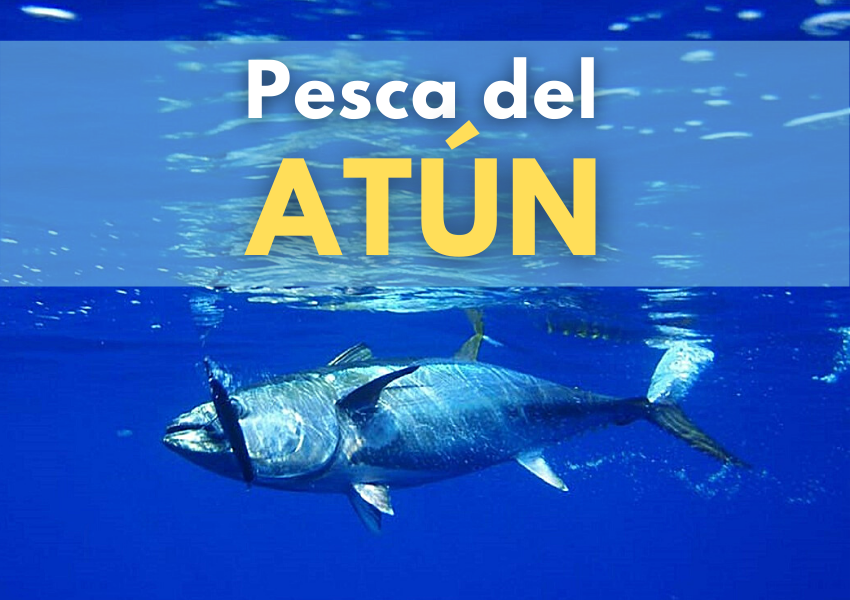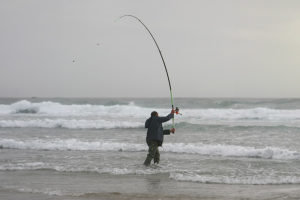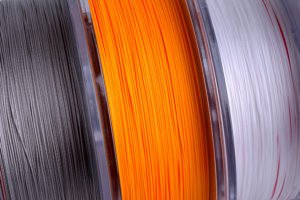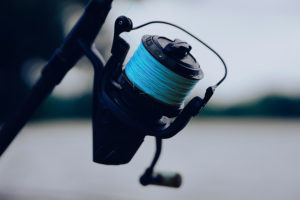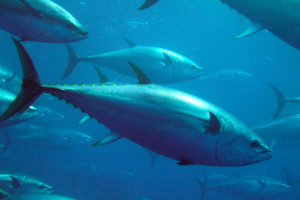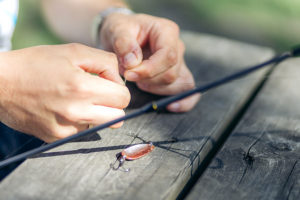La pesca del atún es algo impresionante, tanto por el tamaño del animal como por su fuerza. En WeFish queremos compartir con vosotros los conocimientos del pescador portugués Vítor Ganchinho, CEO de Go Fishing Portugal y un apasionado de la pesca deportiva, con décadas de experiencia.
Vítor cuenta que este verano él y sus compañeros han podido ver con frecuencia ilustres figuras del mar como algún atún grande de entre 60 y 100 kg. Estos iban reunidos en bancos atacando peces en la superficie, y cuando se ven seis atunes saltando, se sabe que tendremos treinta o cuarenta abajo.
No es de extrañar encontrar muchas caballas y abundantes bancos de jureles y sardinas en la costa, ya que estos peces de cebo atraen a los grandes atunes a lugares donde nos son perfectamente accesibles. El encuentro entre los atunes y los pescadores comienza a suceder cada vez con más regularidad, es normal que queramos medir la fuerza de esta gran especie e intentar capturarla.

Características de los atunes
Los atunes tienen un cuerpo en forma de huso, son extremadamente compactos, cortos y gruesos, pura musculatura. Junto a la aleta caudal bifurcada tienen dos aletas laterales de queratina dura, muy fuertes. La queratina es una proteína de origen animal, formada por unos 20 aminoácidos, que está presente en nuestra piel, uñas y cabello. Es por ello que hay que tener especial cuidado a la hora de manipular la cola del atún sin guantes.
Los colores de las distintas especies de atunes que existen son muy parecidos, tonalidades de azul oscuro y plateado que imitan el azul de las profundidades del océano. Su metabolismo corporal es muy rápido, lo que le obliga a ingerir alimentos con frecuencia. Además, algunas especies pueden incluso elevar su temperatura corporal de 10 a 15ºC por encima de la temperatura del agua de alrededor, por eso se le llama pez endotérmico.
El atún es un tremendo nadador que puede hacer hasta 170 km en un solo día, lo que dificulta las referencias sobre dónde encontrarlos. Que un atún haya sido avistado en un área determinada no significa que vaya a estar allí o cerca al día siguiente. Es más común encontrarlo en aguas abiertas pero también se puede acercar a la costa para aprovechar y alimentarse de presas fáciles para estos veloces depredadores. Ver un ataque de atún a peces pequeños con aves de por medio aprovechando su oportunidad para comer es todo un espectáculo.
Una curiosidad de los atunes es que no tienen dimorfismo sexual, es decir, machos y hembras son exactamente iguales. Esto hace que cuando formen bancos lo hagan en función de tamaños similares, por tanto, los ejemplares más grandes tenderán a encontrarse en grupos más pequeños debido a su escasez. Un ejemplar de atún grande es un pez que puede llegar a pesar más de 600 kg de peso y no hay muchos lugares en el mundo donde sea común.
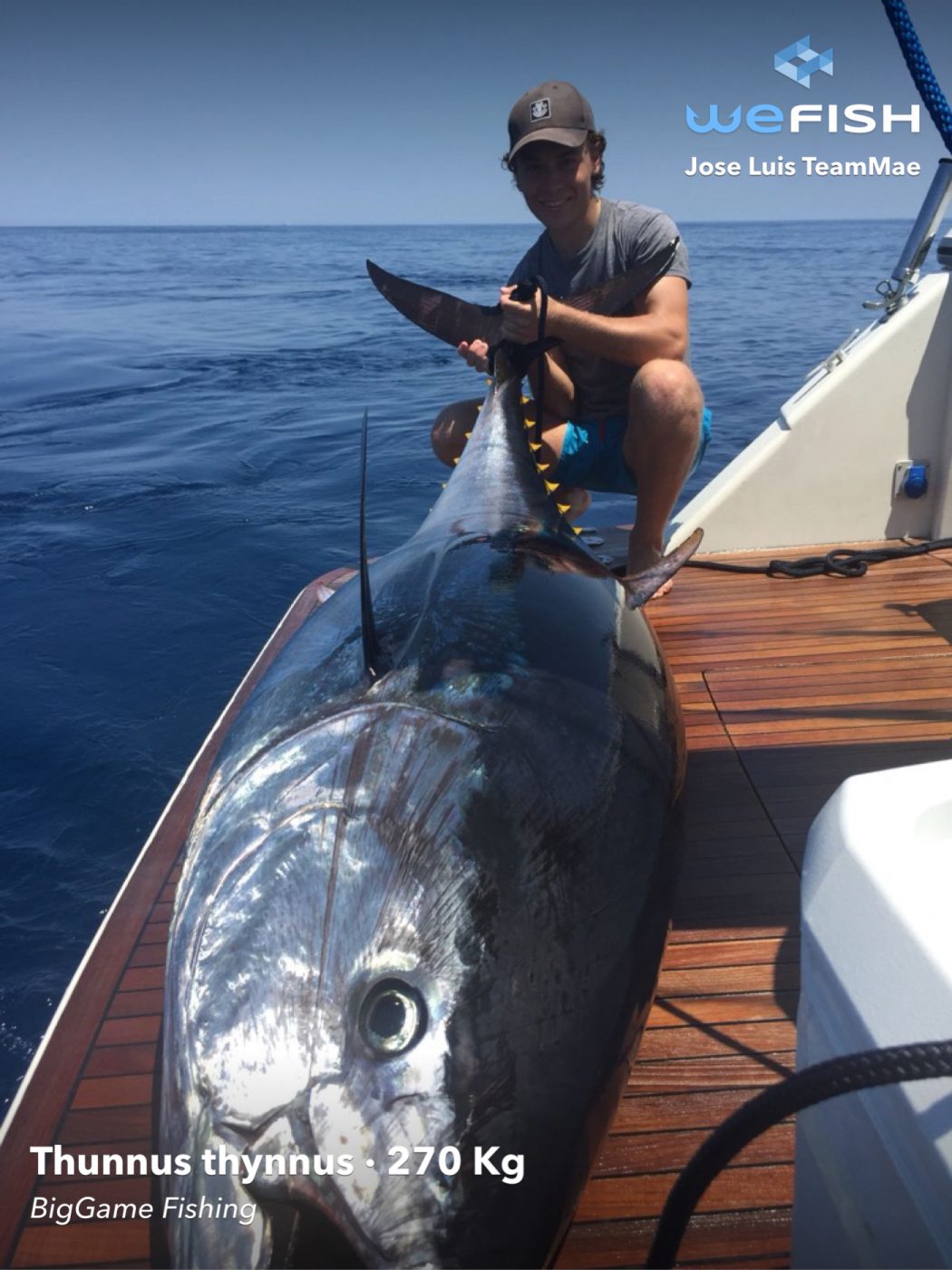
La pesca del atún
No, la pesca del atún no es una tarea fácil. En primer lugar porque en una batalla fuerza a fuerza, ellos ganan. Se trata de un oponente honesto, bien preparado para una lucha de fuerza, que no se rinde sin pelear y que nos hará sudar hasta la última gota.
Es un pez que usa las armas que tiene: su velocidad de movimiento, su peso y su resistencia física. La pesca del atún siempre será difícil, pocas veces encontrarás un atún que se rinda sin intentar romper todo nuestro equipo durante horas y horas. ¿Por qué difícil? porque implica que todo esté alineado, que todo esté perfecto, ya que la menor debilidad en el equipo o el mínimo fallo de rendimiento harán que se acabe la pelea. Estos peces no perdonan el amateurismo, es decir, materiales improvisados o pruebas con carretes y cañas para salir del paso.
Vítor Ganchinho ya ha luchado varias veces la batalla contra los atunes y sabe de sobra qué es lo que se requiere, tanto en términos de materiales como de capacidad física. Analicemos en detalle qué es necesario para poder capturar uno de estos peces:
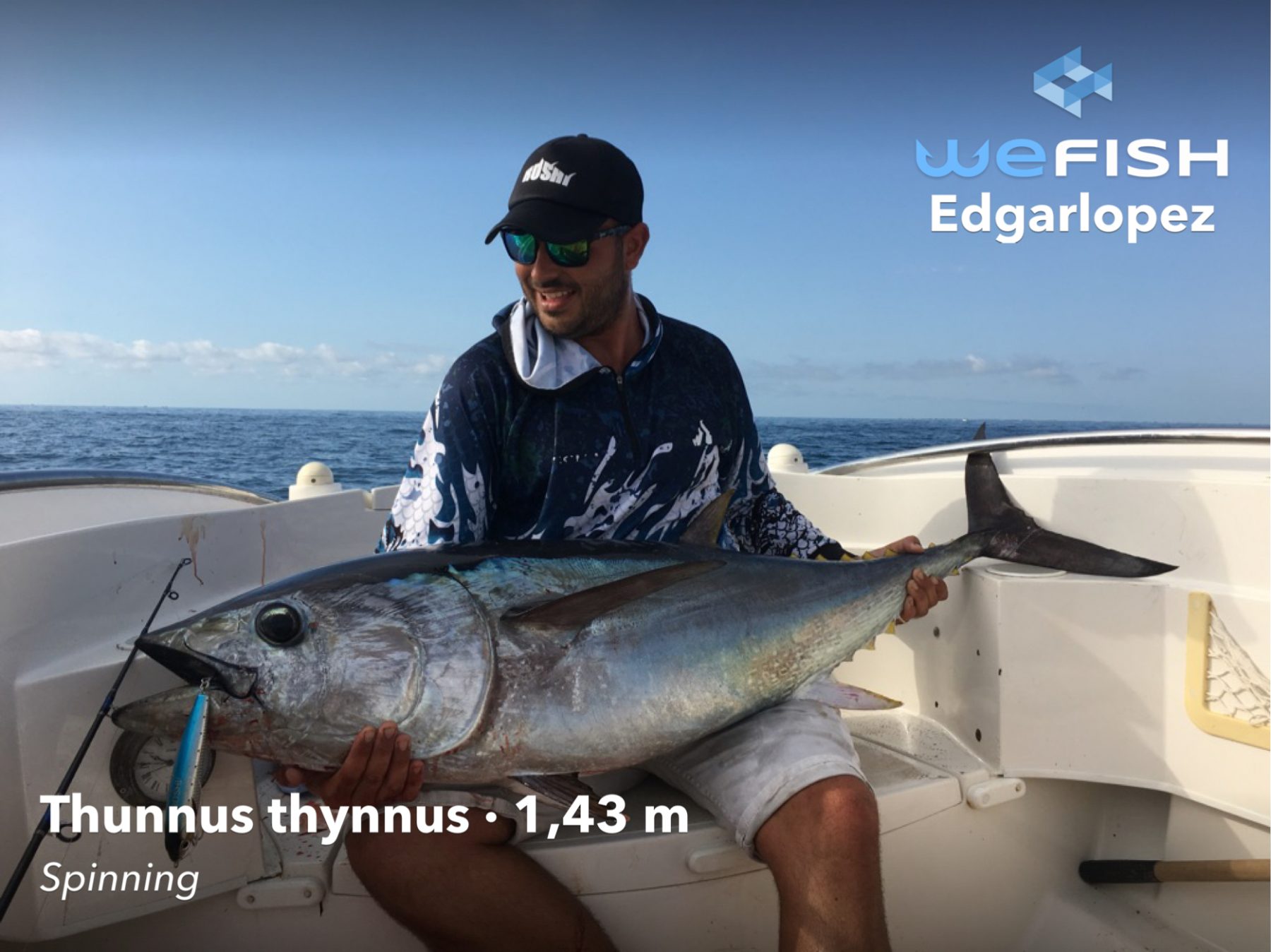
– La caña:
Debe servirnos de resorte, ser capaz gracias a su acción amortiguadora de minimizar los tirones del pez pero también debe fatigarlo hasta que se quede sin fuerzas. Sigue siendo una tarea dura luchar con un pez que entra fácilmente en el ranking de los más fuertes a los que nos podemos enfrentar. Un tiburón da un salto o dos y detiene el barco; en cambio un atún en la segunda salida todavía está tratando de saber cómo preparar su escape. La caña amortigua los tirones (dentro de un cierto límite) y nos permite interferir en su movimiento, pero sin excesos. De hecho, no lo trasladamos, el atún va a donde quiere por un simple motivo: es demasiado pesado para pescarlo y si queremos hacerlo de forma “bruta” lo único que conseguiremos es romper el equipo. Las cañas con anillas, aunque no imprescindibles, son recomendables ya que permiten una salida de la línea sin crear tanta fricción. Un nailon sometido a una presión constante y a un rozamiento considerable tiende a calentarse y perder sus características.
– El carrete:
Hay muchas marcas confiables, tanto japonesas como estadounidenses, pero básicamente recomendamos aquellos que realmente se especializan en atún, como los Tiagra o PENN International. Un carrete Big Game debe llenarse con cientos de metros de línea, de lo contrario lo encontraremos vacío entero justo en la primera salida. No hay un patrón fijo en el comportamiento del atún después de la picada, algunos avanzan horizontalmente, otros prefieren hundirse y llegar lo más lejos que pueden.
– La línea:
Puede parecer extraño, pero la única parte de la línea que es realmente importante es el líder, es decir, de los últimos 6 a 10 metros de nailon que se conectan a la muestra. En cuanto a esto los grandes especialistas defienden que el diámetro es de 2 mm y punto porque la fase crítica es realmente recoger al atún cuando está al lado del barco, ahí es donde te la juegas. Los últimos metros implican esfuerzo físico, la fuerza del atún nunca decae, el peso es demasiado, y en caso de descuido, un último cabezazo puede resultar fatal y comprometer la captura. El resto de la línea solo sirve para garantizar el contacto en un momento en el que el esfuerzo es menor. No se tira de un atún como si fuera una caballa pequeña, es un trabajo de paciencia. La alternativa es hacer una presión máxima y constante y jugártela a que alguna parte del engranaje falle. Los puntos débiles suelen ser las conexiones terminal / anzuelo, el calentamiento de la línea en las clavijas y la capacidad física del pescador o pescadora.
– Señuelos:
La mayoría de los fabricantes saben a qué se dirigen, tienen la experiencia necesaria gracias a miles de informes que realizan sus clientes, y por eso producen material que soporta los ataques de estos colosales peces. Marcas como Rapala o Williamson saben lo que hacen, pero con marcas más baratas como las típicas “made in China” puede ocurrir que el señuelo se desgaste o incluso que los anzuelos se abran. No creemos que valga la pena perder a un pez como este por cosa de 3 o 4 euros…
– La capacidad física:
No se trata de un material pero es un factor muy importante dada la fuerza necesaria para pescar atunes y la resistencia de estos peces. Al final de una pelea que puede superar las 3 horas podemos asegurar que es un detalle muy importante. Todo dependerá del tamaño del atún y un poco de la especie en cuestión, pero de todos modos siempre se necesitará algo de fuerza física, eso sin duda. También es muy importante que el pescador utilice guantes para proteger las manos del roce y un cinturón de pesca para sujetar la caña.
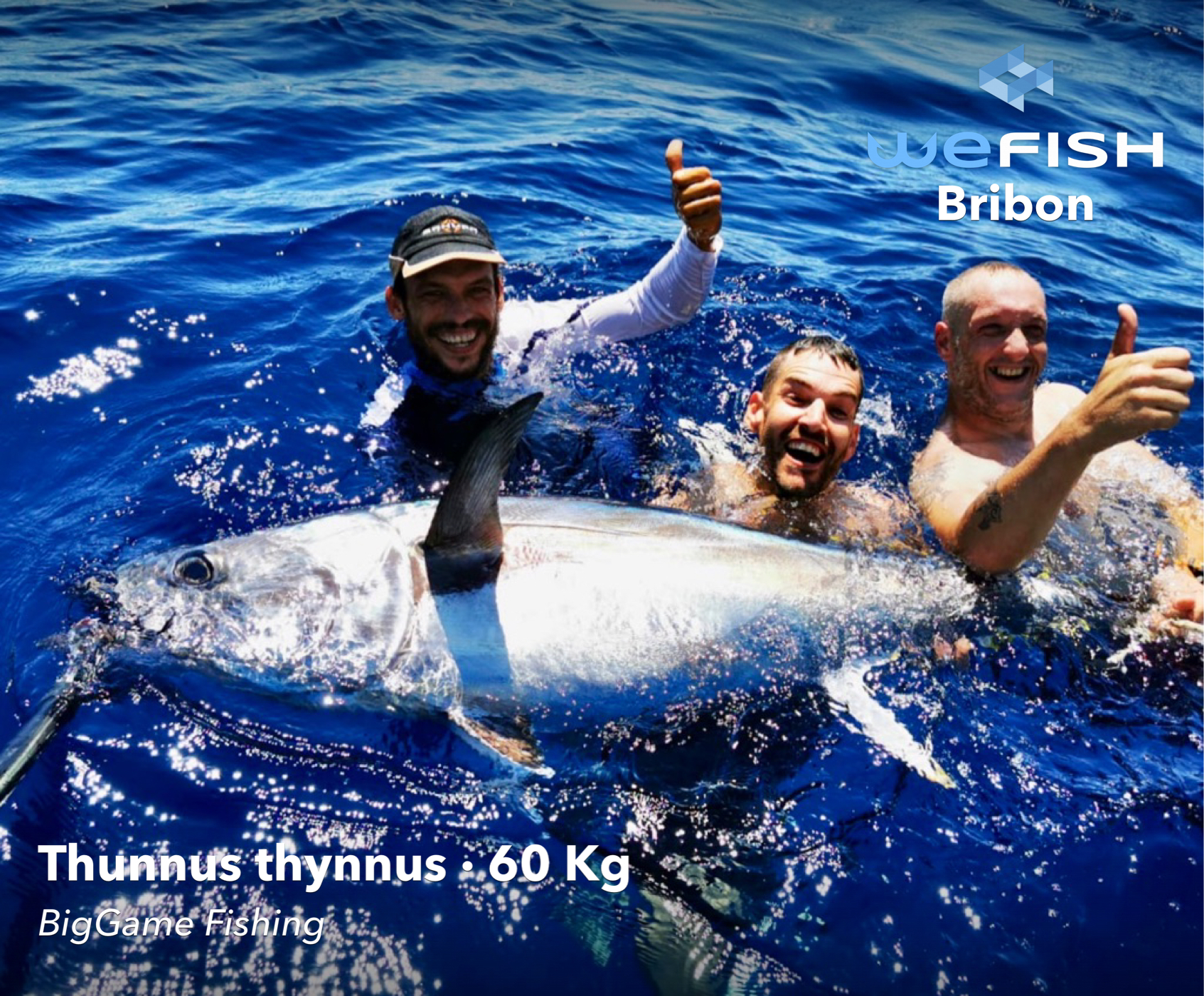
Esto ha sido todo sobre la pesca del atún. El contenido original proviene del texto escrito por nuestro amigo Vítor Ganchinho en su blog de pesca PEIXE PELO BEICINHO
Si quieres ver capturas de atunes impresionantes o incluso animarte a pescarlos y subir las tuyas a WeFish, descarga gratis la app de pesca más completa.

